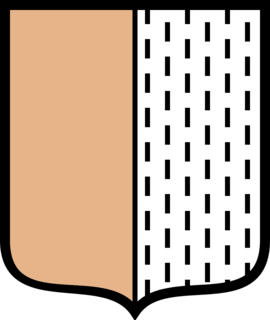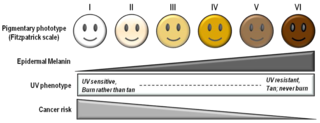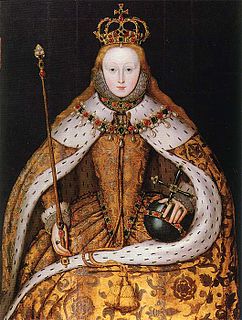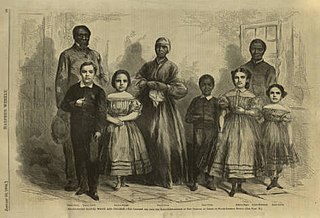 W
WHuman skin color ranges from the darkest brown to the lightest hues. Differences in skin color among individuals is caused by variation in pigmentation, which is the result of genetics, the exposure to the sun, or both. Differences across populations evolved through natural selection, because of differences in environment, and regulate the biochemical effects of ultraviolet radiation penetrating the skin.
 W
WAlbinism is a congenital disorder characterized in humans by the complete or partial absence of pigment in the skin, hair and eyes. Albinism is associated with a number of vision defects, such as photophobia, nystagmus, and amblyopia. Lack of skin pigmentation makes for more susceptibility to sunburn and skin cancers. In rare cases such as Chédiak–Higashi syndrome, albinism may be associated with deficiencies in the transportation of melanin granules. This also affects essential granules present in immune cells leading to increased susceptibility to infection.
 W
WA beauty mark or beauty spot is a euphemism for a type of dark facial mark so named because such birthmarks are sometimes considered an attractive feature. Medically, such "beauty marks" are generally melanocytic nevus, more specifically the compound variant. Moles of this type may also be located elsewhere on the body, and may also be considered beauty marks if located on the face, shoulder, neck or breast. Artificial beauty marks have been fashionable in some periods.
 W
WIn heraldry, carnation is a tincture, the name for skin colour, more exactly the colour of pale or white human skin.
 W
WDark skin is a human skin color that is rich in melanin pigments, especially eumelanin. People with very dark skin are often referred to as "black people", although this usage can be ambiguous in some countries where it is also used to specifically refer to different ethnic groups or populations.
 W
WThe Fitzpatrick scale is a numerical classification schema for human skin color. It was developed in 1975 by Thomas B. Fitzpatrick as a way to estimate the response of different types of skin to ultraviolet (UV) light. It was initially developed on the basis of skin color to measure the correct dose of UVA for PUVA therapy, and when the initial testing based only on hair and eye colour resulted in too high UVA doses for some, it was altered to be based on the patient's reports of how their skin responds to the sun; it was also extended to a wider range of skin types. The Fitzpatrick scale remains a recognized tool for dermatological research into human skin pigmentation.
 W
WFreckles are clusters of concentrated melaninized cells which are most easily visible on people with a fair complexion. Freckles do not have an increased number of the melanin-producing cells, or melanocytes, but instead have melanocytes that overproduce melanin granules (melanosomes) changing the coloration of the outer skin cells (keratinocytes). As such, freckles are different from lentigines and moles, which are caused by accumulation of melanocytes in a small area. Freckles can appear on all types of skin tones. Of the six Fitzpatrick skin types, they are most common on skin tones 1 and 2, which usually belong to North Europeans. However, it can be found in all ethnicities.
 W
WIndoor tanning involves using a device that emits ultraviolet radiation to produce a cosmetic tan. Typically found in tanning salons, gyms, spas, hotels, and sporting facilities, and less often in private residences, the most common device is a horizontal tanning bed, also known as a sunbed or solarium. Vertical devices are known as tanning booths or stand-up sunbeds.
 W
WLight skin is a human skin color, which has little eumelanin pigmentation and which has been adapted to environments of low UV radiation. Light skin is most commonly found amongst the native populations of Europe and Asia as measured through skin reflectance. People with light skin pigmentation are often referred to as "white" or "fair", although these usages can be ambiguous in some countries where they are used to refer specifically to certain ethnic groups or populations.
 W
WLiver spots are blemishes on the skin associated with aging and exposure to ultraviolet radiation from the sun. They range in color from light brown to red or black and are located in areas most often exposed to the sun, particularly the hands, face, shoulders, arms and forehead, and the scalp if bald.
 W
WMelanin is a broad term for a group of natural pigments found in most organisms. Melanin is produced through a multistage chemical process known as melanogenesis, where the oxidation of the amino acid tyrosine is followed by polymerization. The melanin pigments are produced in a specialized group of cells known as melanocytes.
 W
WThe melanocortin 1 receptor (MC1R), also known as melanocyte-stimulating hormone receptor (MSHR), melanin-activating peptide receptor, or melanotropin receptor, is a G protein–coupled receptor that binds to a class of pituitary peptide hormones known as the melanocortins, which include adrenocorticotropic hormone (ACTH) and the different forms of melanocyte-stimulating hormone (MSH). It is coupled to Gαs and upregulates levels of cAMP by activating adenylyl cyclase in cells expressing this receptor. It is normally expressed in skin and melanocytes, and to a lesser degree in periaqueductal gray matter, astrocytes and leukocytes. In skin cancer, M1CR is highly expressed in melanomas but not carcinomas.
 W
WMottle is a pattern of irregular marks, spots, streaks, blotches or patches of different shades or colours. It is commonly used to describe the surface of plants or the skin of animals. In plants, mottling usually consists of yellowish spots on plants, and is usually a sign of disease or malnutrition. Many plant viruses cause mottling, some examples being:Tobacco vein mottling virus Bean pod mottle virus
 W
WOlive skin is a human skin colour spectrum. It is often associated with pigmentation in the Type III to Type IV and Type V ranges of the Fitzpatrick scale. It generally refers to light or moderate brown, brownish, or tan skin, and it is often described as having yellow, green, or golden undertones.
 W
WPersecution of people with albinism is based on the belief that certain body parts of albinistic people can transmit magical powers. Such superstition is present especially in some parts of the African Great Lakes region, it has been promulgated and exploited by witch doctors and others who use such body parts as ingredients in rituals, concoctions and potions with the claim that their magic will bring prosperity to the user.
 W
WIdentifying human races in terms of skin color, at least as one among several physiological characteristics, has been common since antiquity. Via rabbinical literature, the division is received in early modern scholarship, mostly in four to five categories. It was long recognized that the number of categories is arbitrary and subjective. François Bernier (1684) doubted the validity of using skin color as a racial characteristic, and Charles Darwin emphasized the gradual differences between categories.
 W
WVenetian ceruse, also known as blanc de ceruse de Venise and Spirits of Saturn, was a 16th-century cosmetic used as a skin whitener. It was in great demand and considered the best available at that time. It is similar to the regular ceruse, although it was marketed as better, more exclusive and expensive than the regular ceruse variant. The regular ceruse white pigment is a basic lead carbonate of chemical formula 2 PbCO3·Pb(OH)2 while the mineral cerussite is a simple carbonate of lead.
 W
WVon Luschan's chromatic scale (VLS) is a method of classifying skin color. It is also called the von Luschan scale or von Luschan's scale. It is named after its inventor, Felix von Luschan. The equipment consists of 36 opaque glass tiles which were compared to the subject's skin, ideally in a place which would not be exposed to the sun. The von Luschan scale was used to establish racial classifications of populations according to skin color; in this respect it is in contrast to the Fitzpatrick scale intended for the classification of the skin type of individuals introduced in 1975 by Harvard dermatologist Thomas B. Fitzpatrick to describe sun tanning behavior.
 W
WWhite slave propaganda is the term given to publicity, especially photograph and woodcuts, and also novels, articles, and popular lectures, about mixed-race, white-looking slaves, which was used during and prior to the American Civil War to further the abolitionist cause and to raise money for the education of former slaves. The images included children with predominantly European features photographed alongside dark-skinned adult slaves with typically African features. It was intended to shock the viewing audiences with a reminder that slaves shared their humanity, and evidence that slaves did not belong in the category of the "Other".